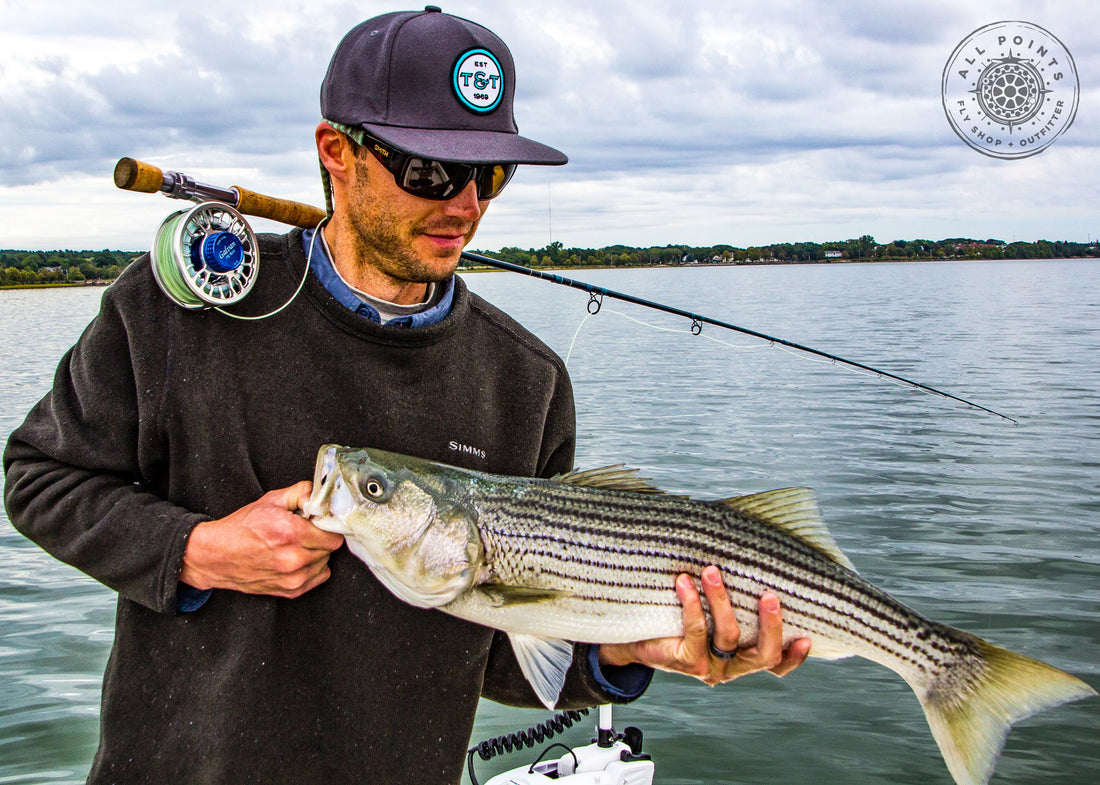
3 Tips For Striped Bass Fishing In The Fall
Share
Here in the Northeast, we anticipate the 'fall run' well in advance. The opportunity to catch large bass looking for a quick meal before their long trip south is ever-present. There are a number of factors which make fall fishing for stripers different than the rest of the season. Here are three helpful tips for keeping your line tight this fall!
1. Beat The Wind - Switch Your Line
The arrival of autumn brings with it increasing wind. You can see it in the trees and feel it off the water, especially in the mornings. Plus, it's also hurricane season. So with all this brings increased wind speeds and higher surf which can make casting more difficult. Try switching to an intermediate line if you've been using a floating, or a sinking tip line if you've been casting an intermediate. This can help many anglers get the amount of line out they want in rougher weather. The added advantage to this is two fold:
- As lines go from floating to sinking they get thinner - specifically the head. This helps cut through the wind.
- Intermediate and sinking lines are traditionally heavier than their floating counterpart. This helps load the rod easier, does so at shorter distances, and gets through the breeze with less effort.
2. Bring A Lot Of Patterns
The fall run can be incredible mostly due to the amount and diversity of bait that is around. This also makes the fall run unpredictable. Adult menhaden, herring, baby bunker, mackerel, silversides, sand eels, etc. - they can all be present at any given time! It's a wise idea to bring along various patterns that can imitate that unexpected bait you see popping out of the water. Also think small. Bass can be focusing on the smaller bait that is flushing out of the estuaries, so don't be afraid to switch from that 12 inch flat-wing to a smaller peanut bunker pattern. Big fish can be just as likely to hit small flies as larger ones in the fall.
3. Think Inshore + Come Prepared
Knowledge is power. Knowing what to expect during the unexpected might seem like an oxymoron, but if you have an idea of what might happen you'll be quicker and more efficient in your fishing when the situation presents itself. The cooling water temps are signaling the baby bait to work their way out of the estuaries, and is also pushing the adult bait close to shore to start their migration south. So stay close, no need to blast around waayy offshore or find the longest jetty in the area. The beaches, rocks/ledges, and estuaries will be where most of the action is. If you are on boat, stick close and work the inner channels and flats. The wading angler can have just as much success as the mobile boater.
I hope those three tips help. Enjoy the last of the striper season!
Words + Photos by: Josh Thelin



1 comment
I wanted to thank you for this advice when it comes to fishing for striped bass in the fall. You mentioned it could be good to bring a lot of patterns that can imitate that unexpected bait. It also seems like a fun way to add variety to your fishing trip and seeing what patterns work and which ones don’t. https://huntercharters.com